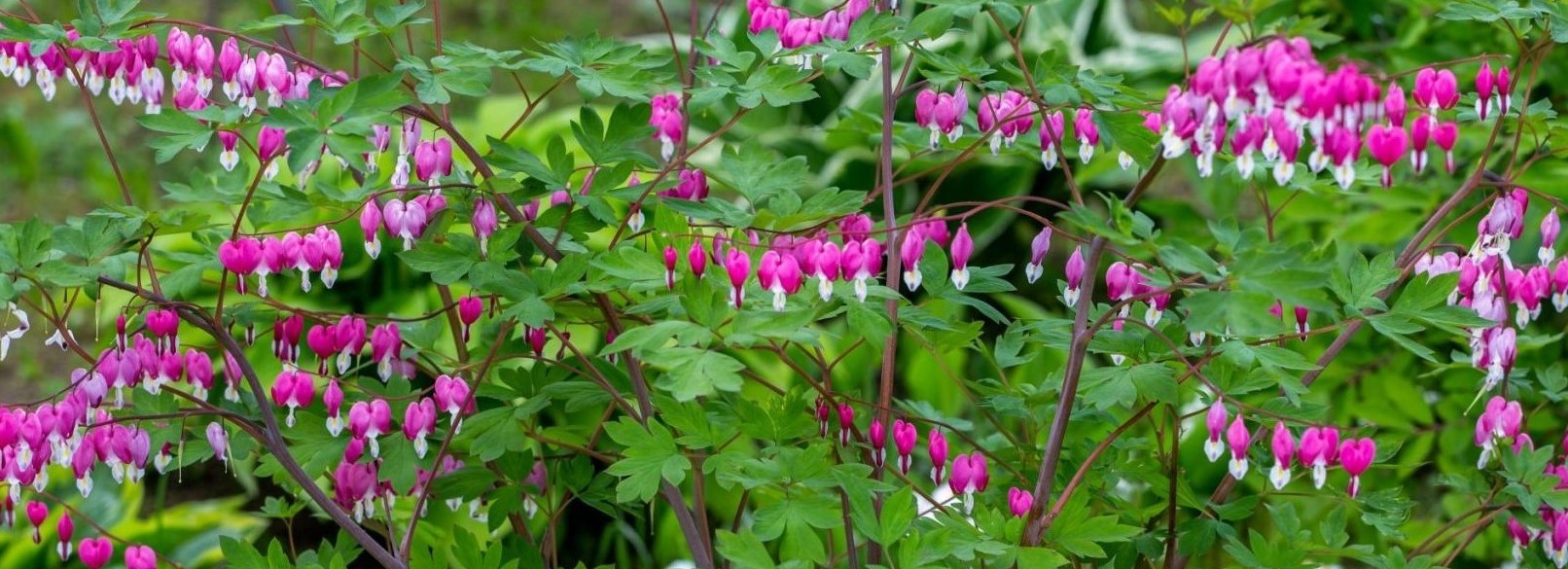
The old-fashioned bleeding heart, scientifically known as Lamprocapnos spectabilis, is a stunning perennial plant that is sure to capture the attention of any garden enthusiast. Known for its unique heart-shaped flowers and delicate, cascading foliage, this plant has been a favorite in gardens for generations.
In this article, we will explore 11 astonishing facts about the old-fashioned bleeding heart. From its origin and traditional symbolism to its care requirements and interesting varieties, we will dive deep into the world of this enchanting plant. Whether you are an avid gardener or simply appreciate the beauty of nature, prepare to be amazed by the wonders of the old-fashioned bleeding heart.
Key Takeaways:
- The Old-Fashioned Bleeding Heart is a symbol of love and emotion, with stunning heart-shaped petals that attract pollinators and resist deer. It’s low maintenance, long-lasting, and even has medicinal uses!
- This unique flower blooms in spring, thrives in partial shade, and is native to Asia and North America. It’s a beautiful addition to gardens and floral arrangements, making it a must-have for any plant lover!
A Beautiful and Unique Flower
The Old-Fashioned Bleeding Heart, also known as Dicentra spectabilis, is a beautiful and unique flowering plant that belongs to the Papaveraceae family. Its stunning heart-shaped pink or white flower petals are sure to capture your attention.
Symbol of Love and Emotion
The Old-Fashioned Bleeding Heart is often considered a symbol of love and emotion. Its delicate flowers, with their drooping petals, resemble a heart that appears to be weeping tears of love, hence the name “Bleeding Heart.
Native to Asia and North America
This captivating flower is native to eastern Asia, including Japan, China, and Korea, as well as certain regions of North America. It can be found growing in woodland areas, shaded gardens, and alongside streams.
Thrives in Partial Shade
The Old-Fashioned Bleeding Heart prefers to grow in partial shade, making it an excellent choice for an understory plant in gardens or woodland landscapes. It is well-suited for areas with dappled sunlight or light shade.
Blooms in Spring
One of the most delightful aspects of the Old-Fashioned Bleeding Heart is its blooming season. It typically produces its charming flowers in the springtime, adding a burst of color and beauty to the landscape.
Attracts Pollinators
The Old-Fashioned Bleeding Heart is a favorite among pollinators such as bees and butterflies. Its nectar-rich flowers act as a magnet, drawing in these beneficial creatures that aid in the pollination process.
Deer Resistant
If you have a garden plagued by hungry deer, the Old-Fashioned Bleeding Heart might be the perfect solution. This plant is known for its resistance to deer browsing, allowing it to thrive in areas where deer are present.
Low Maintenance
An added benefit of the Old-Fashioned Bleeding Heart is its low maintenance nature. Once established, it requires minimal care and attention. Regular watering and occasional fertilization will help keep it healthy and thriving.
Longevity
The Old-Fashioned Bleeding Heart is a perennial flower, meaning it will come back year after year with proper care. With its longevity, you can enjoy its beautiful blooms for many seasons.
Medicinal Uses
In some traditional medicine practices, the Old-Fashioned Bleeding Heart has been used for its therapeutic properties. It has been believed to have benefits such as reducing inflammation, relieving pain, and improving heart health.
Beautiful Ornamental Plant
Not only is the Old-Fashioned Bleeding Heart a stunning flower in gardens and landscapes, but it also makes a lovely addition to floral arrangements and bouquets. Its unique shape and vibrant colors add a touch of elegance to any floral display.
Conclusion
The old-fashioned bleeding heart is a fascinating plant that has captivated gardeners around the world with its unique appearance and rich history. From its heart-shaped flowers to its ability to survive in shady conditions, there are so many reasons to appreciate this beautiful plant. Whether you’re a seasoned gardener or just starting out, the old-fashioned bleeding heart is sure to bring joy and charm to any garden.
FAQs
Q: How tall does the old-fashioned bleeding heart grow?
A: The old-fashioned bleeding heart can reach a height of about 2 to 3 feet, making it an ideal choice for adding vertical interest to your garden.
Q: Can the old-fashioned bleeding heart tolerate shade?
A: Yes, the old-fashioned bleeding heart is well adapted to growing in shady conditions. It thrives in partial to full shade, making it a great choice for under trees or in shaded borders.
Q: When does the old-fashioned bleeding heart bloom?
A: The old-fashioned bleeding heart typically blooms in the spring, usually from late April to early June. During this time, its delicate, heart-shaped flowers adorn the plant and create a stunning display in the garden.
Q: How do I care for the old-fashioned bleeding heart?
A: The old-fashioned bleeding heart prefers moist, well-draining soil and regular watering. It’s important to keep the soil consistently moist, especially during hot and dry periods. Additionally, you can remove any faded flowers to encourage continuous blooming.
Q: Can I grow the old-fashioned bleeding heart in containers?
A: While the old-fashioned bleeding heart is typically grown in the ground, it can also be grown in containers as long as the container has good drainage. Just make sure to choose a container that is large enough to accommodate the plant’s root system.
Q: Is the old-fashioned bleeding heart deer resistant?
A: Yes, the old-fashioned bleeding heart is considered to be deer resistant. Its foliage has a bitter taste, which deters deer from feeding on it. However, it’s important to note that no plant is completely deer proof, and hungry deer may still nibble on the plant in times of scarcity.
Old-fashioned bleeding hearts are truly enchanting, but they're not the only fascinating flowers out there. Bleeding hearts boast stunning heart-shaped flowers that dangle delicately from arching stems. Brunnera, a charming perennial, offers both attractive foliage and dainty blue blossoms. Dive deeper into the captivating world of flowers and uncover even more intriguing flower facts that will leave you in awe of nature's breathtaking beauty.
Was this page helpful?
Our commitment to delivering trustworthy and engaging content is at the heart of what we do. Each fact on our site is contributed by real users like you, bringing a wealth of diverse insights and information. To ensure the highest standards of accuracy and reliability, our dedicated editors meticulously review each submission. This process guarantees that the facts we share are not only fascinating but also credible. Trust in our commitment to quality and authenticity as you explore and learn with us.


